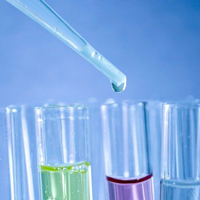 Smart Citations
Smart CitationsSee how this article has been cited at scite.ai
scite shows how a scientific paper has been cited by providing the context of the citation, a classification describing whether it supports, mentions, or contrasts the cited claim, and a label indicating in which section the citation was made.
An iridoid, lamiide, its extraction method from Phlomis bruguieri, and evaluation of its antioxidant capacity
Phlomis bruguieri is a native plant in Iran, which deserves phytochemical study. The aim of this study was evaluation of its iridoid contents along with its antioxidant capacity. Aerial parts of the plant material were extracted with methanol and applied on repeated normal column chromatography using hexane: chloroform (70:30), chloroform: methanol (90:10), and methanol (100%). The fraction eluted with methanol (100%) containing polar glycosides was selected and medium pressure liquid chromatography (MPLC) on a RP-18 cartridge. Fraction elute by MeOH: water 30:70 was loaded on HPLC on RP-18 column for final purification. Structure elucidation was done using 1D and 2D NMR, and mass spectra. Antioxidant activity including total antioxidant capacity, DPPH and FRAP methods were designated to assess the in vitro antioxidant capacities. This study indicated the presence of lamiide as iridoid compound in the aerial parts of Phlomis bruguieri for the first time in this plant [350 mg/2 kg; 0.0175 % (w/w)]. Lamiide showed moderate antioxidant activity using TAC (EC50: 55 μg/mL; ascorbic acid EC50: 7.5 μg/mL), DPPH (EC50: 116.2 ± 3.51 μg/mL; ascorbic acid:34.7 ± 0.97 μg/mL), and FRAP (EC50:>200 μg/mL; quercetin: 7.5 ± 0.68 μg/mL) methods.
How to Cite
PAGEPress has chosen to apply the Creative Commons Attribution NonCommercial 4.0 International License (CC BY-NC 4.0) to all manuscripts to be published.

 https://doi.org/10.4081/idhm.2020.109
https://doi.org/10.4081/idhm.2020.109





